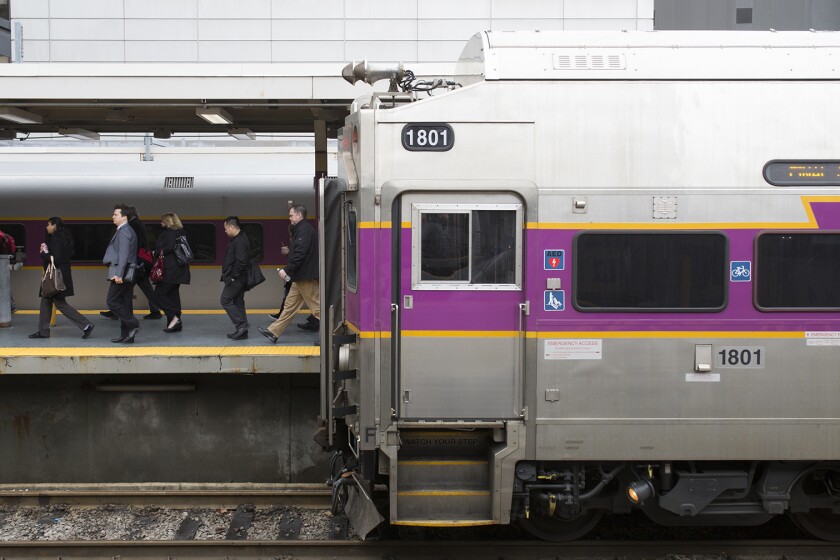Like most transit systems, the Washington Metropolitan Area Transit Authority (Metro) saw its ridership plummet in 2020 and it has only partially recovered this year as many office workers continue to work from home.
That’s why policymakers decided to make aggressive changes to pivot away from a schedule that prioritizes traditional rush hour riders. Metro has the third largest heavy rail system in the U.S. and runs the country’s sixth largest bus system, so its policy shifts are likely to be noted by its counterparts and could be pace-setting for the larger public transport sector.
“It’s pretty safe to say very few people will be going into the office five days a week, which is the bread and butter of a lot of transit systems,” says Paul C. Smedberg, chairman of Metro’s Board. “So are there things that we can do to help induce non-work travel on the system, in addition to supporting work trips made at non-peak hours?”
Beginning in early September, Metro will enact a suite of policy changes to reduce fares and increase frequencies during off-peak hours.
Weekend trips will universally be priced at $2 a ride, as opposed to the usual model based on distance traveled. Transfer fees that heavily penalize lower-income riders (who don’t tend to live next to rail stops) will be eliminated. The price of bus passes will fall, while frequencies on 36 bus lines will be increased.
On the Red Line (the most heavily used in the system) and all multi-line segments of the Metro rail, wait times during the weekday will be a maximum of six minutes. Late service will be extended on Fridays and Saturdays until 1 a.m. and frequencies at night and on weekends will be increased too.
Metro’s leadership hope the changes will boost lagging ridership, attracting users both new and old. On the average day in July of 2019, Metro rail saw 649,000 riders and Metro bus saw 364,000. This year, even asvaccine rates in the region soar, the rail system only saw 167,000 riders and the bus system 198,000 (on an average July day).
Automobile traffic in the D.C. area, always bad, has grown worse than ever.
“The message to us from the secretaries of transportation [in Maryland and Virginia] and leaders in the District of Columbia was we want people getting back on transit,” says Smedberg. “We don’t want Carmageddon.”
In determining how to make changes, Metro policymakers studied where ridership remained strongest even during the pandemic’s worst. They saw that low-income riders and those without access to a car continued to use public transit heavily, as did many essential workers in the health-care and government fields. As vaccinations spread, and restaurants began to recover, they also saw increased demand at night from food service workers.
These kinds of non-office workers have long been poorly served by the Metro rail.
“Late night transit for workers in the nightlife and restaurant industries have been a big point of concern,” says Jane Lyons, Maryland advocacy manager at the Coalition for Smarter Growth. “Recently with the return to restaurants and having people go out again, restaurant workers have had a really difficult time getting home. This will make it a little easier for them to have an option that isn’t an expensive taxi or rideshare.”
Lyons and her colleagues are excited to see the changes coming to Metro, and they particularly praise the elimination of transfer fees. Her only concern is that the agency says that in September rail service will be 91 percent back to pre-pandemic levels and bus service will be 97 percent back. Lyons would prefer to see Metro going beyond what was offered in 2019.
Metro spokespeople say that further rail service will be added in December, especially on the Red Line, and that infrastructure projects are the only reason for the delay that results in just 91 percent of pre-pandemic service coming back to rail in September. They also say that on many bus routes and some subway lines service will be even better than it was pre-pandemic and that the periods where service won’t be fully returning are during the now-dead rush-hour peak.
Increasing service and reducing fares is, of course, a pricey proposition. With ridership still so far below pre-pandemic levels, fare revenue is also dramatically depressed. In fiscal year 2019, fares represented 42 percent of Metro’s operating expenses. This year they will only comprise 11 percent. The gap is being filled by the generous operating subsidies provided by the federal government in the various rescue packages passed by Congress in 2020 and early 2021.
Smedberg says that Metro is planning for the end of those federal operating subsidies.
“We’re definitely going to have a financial challenge for the next couple of years or so,” says Smedberg. “We’re hoping that after Labor Day people start coming back to the office and to Metro. We’re hoping that as we get more riders in [from the policy changes], we’ll have more revenue through rides.”
Smedberg isn’t aware of any other major American transit agencies that have made similar policy adjustments to pandemic-era changes in ridership demands. Multiple transit experts queried for this article say they believe Metro is out front in its efforts to face the new reality.
There are smallercitiesthat have made changes like furthering experiments with free fares, and San Francisco is halving fare prices in September and restoring service to every 15 minutes throughout the day.
But no other city has made the scale of adjustments that are coming to Washington, D.C., in a couple weeks.
“I haven’t seen anything as dramatic in terms of the extensiveness of the changes being advanced,” says Yonah Freemark, senior research associate in Metropolitan Housing and Communities at the Urban Institute. “Some systems are going back to the services they once provided, but this is clearly an all-out effort from the Metro Board to say that building ridership is important to us. It’s a model for other parts of the country.”
Related Articles














